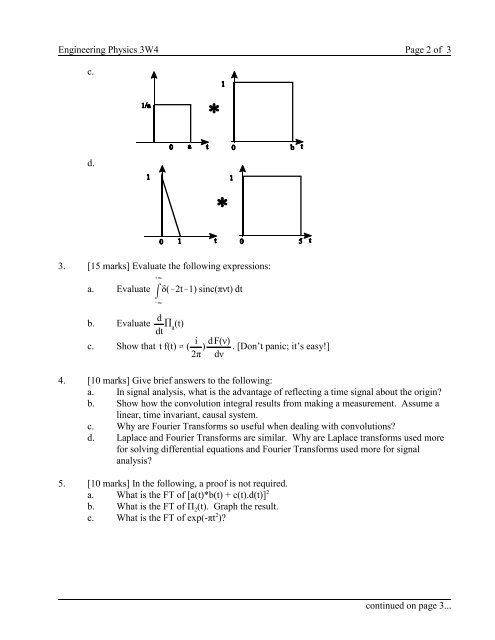Final - Bill Garland's Nuclear Engineering Page
Final - Bill Garland's Nuclear Engineering Page
Final - Bill Garland's Nuclear Engineering Page
You also want an ePaper? Increase the reach of your titles
YUMPU automatically turns print PDFs into web optimized ePapers that Google loves.
<strong>Engineering</strong> Physics 3W4 <strong>Page</strong> 2 of 3<br />
c.<br />
d.<br />
3. [15 marks] Evaluate the following expressions:<br />
%4<br />
a. Evaluate δ(&2t&1) sinc(πνt) dt<br />
m<br />
&4<br />
b. Evaluate d dt ( a (t)<br />
c. Show that t f(t) W ( i . [Don’t panic; it’s easy!]<br />
2π ) dF(ν)<br />
dν<br />
4. [10 marks] Give brief answers to the following:<br />
a. In signal analysis, what is the advantage of reflecting a time signal about the origin<br />
b. Show how the convolution integral results from making a measurement. Assume a<br />
linear, time invariant, causal system.<br />
c. Why are Fourier Transforms so useful when dealing with convolutions<br />
d. Laplace and Fourier Transforms are similar. Why are Laplace transforms used more<br />
for solving differential equations and Fourier Transforms used more for signal<br />
analysis<br />
5. [10 marks] In the following, a proof is not required.<br />
a. What is the FT of [a(t)*b(t) + c(t).d(t)] 2<br />
b. What is the FT of Π 2 (t). Graph the result.<br />
c. What is the FT of exp(-πt 2 )<br />
continued on page 3...
















